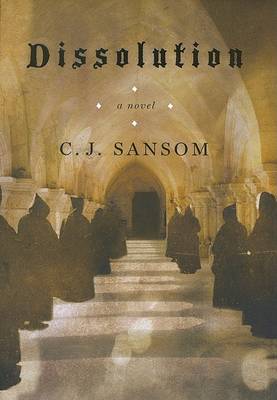Reviewed by ibeforem on
The event that forms the background of the investigation is the systematic dissolution of Catholic monasteries throughout England. Shardlake is not only there to investigate his predecessor’s death, but to find a reason for Cromwell to dissolve the monastery and take its riches for the king.
Shardlake is not your usual investigator. He is not detached, or systematic. In fact, his feelings get very involved in his investigation. Especially troublesome are his feelings of envy of his protege and ward, young and handsome Mark. The investigation goes in many directions, sometimes too many, but the end result was satisfying.
I thought an interesting touch was the weather and terrain keeping the monastery very isolated from the politics that overwhelm most Tudor-era novels. It’s still a part of the backdrop, but not a part of the day-to-day workings.
This is a series I’d like to continue!
Reading updates
- Started reading
- Finished reading
- 7 June, 2016: Reviewed

